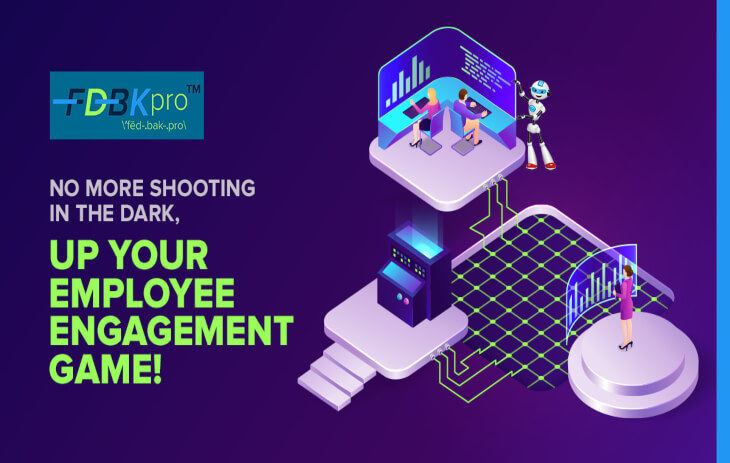The world over, organizations are looking at improving their employee engagement initiatives because it has emerged that employee engagement is the magic pill that boosts productivity, aids employee retention, and fosters innovation in the workplace.
However, employee engagement statistics reveal the engagement crisis that we are facing now. Disengaged employees cost companies $450-500 billion each year. 85% of employees are not engaged in the workplace. Given that companies with a high-engaged workforce are 21% more profitable, it is but natural for organizations to focus on employee engagement initiatives.
A report from Gallup shows that organizations across the world recognize the importance of employee engagement. Despite having instituted surveys to measure the same, the needle on employee engagement has hardly budged in over a decade.
Gallup, in its report, explains that those companies who rely solely on “invalidated, unfocused annual surveys” are working only on metrics that give no actionable insights to improve engagement levels of the workforce. Today’s workforce is far more complex than it has ever been before. A different set of motivators drive each generation. Each has a different set of expectations from their workplace. And each has a different understanding of what engagement means to them.
It is becoming increasingly clear that to establish strong employee engagement, organizations will need to do more than rely on an annual survey.
Why these surveys don‘t work?
The employee engagement survey is quintessentially less engaging. Typically, it comes at one particular time in the year as an email demanding 10−15 minutes of an employee‘s time. The questions in the survey encompass everything starting from workloads and work environment to leadership vision. And while employees take the time out to fill this survey, they consider this exercise as a waste of their time − not because of their lack of opinion but more because of their doubt that their response will drive any change.
Survey results are rarely shared and defined plans to make changes are rarely discussed. Is it unfair for the employees to then feel that this exercise was a waste of their time?
Surveys are generic
The key problem with employee engagement surveys is that it puts all employees in the same box and almost refuses to admit that each employee is different, with a different set of motivations. Generic surveys do not take into account what motivates the employees, what drives them, what are the roadblocks they face, what kind of enablement they want at work.
Ideally, just like bespoke clothing, engagement surveys have to be bespoke too − tailored and personalized to get insights into things that matter to the employees.
While employee engagement is a fluid, open−ended concept, surveys have a rigid structure. The objective of the survey is to gather information and opinions. Hence, they contain a list of predefined questions that somehow do not capture the entire gamut of the employee engagement picture.
An annual survey becomes a transactional exercise, something like a box-checking exercise, and hence fails to glean true insights into the employee−s views on engagement. This doesn−t meet the need of the multi−generational workforce that wants organizations to be invested in their opinions and interests.
Heavy reliance on ‘memory’
It is a tall ask to expect employees to remember exactly how the year went down. Usually, it is only a few standout events that they remember. Granular details become hazy as time passes since our memory does not serve us well when it comes to remembering everyday things.
It is not fair for organizations to expect employees to remember all the occasions when they felt disengaged and the exact reasons for the same until the engagement survey happens. This dependence on ‘memory’ makes these long, annual surveys quite redundant as the data yield is hardly usable. This leads to a vicious vortex of inaction followed by more disengagement at work.
Information avalanche and paralysis by analysis
The annual employee engagement survey is also counterproductive from the organization‘s perspective and not from the employees‘ perspective alone. The objective of these surveys is for organizations to glean information. However, what organizations end up with is paralysis by analysis − the data is never relevant and comprehensive enough to drive decisions.
By the time this data collection is done, the problems that organizations decide to focus on no longer are problems. This not only is a colossal waste of time but also leads to relationship issues with employees as they feel undervalued. By the time the employees hear about the survey results, they forget what they have answered and why. This can lead to some feeling misrepresented or even misunderstood irrespective of their answers.
What can we do?
Employee engagement surveys are not redundant. What they need is a facelift to make them more relevant to the workforce of today. These surveys are essential to help employees understand that the organization is invested in their well-being and that they want to push enablement at work.
So, what can organizations do to make their engagement surveys worthwhile ? both for the workforce and for themselves?
−Instead of relying on one humongous pile of data that doesn?t lead to any deep and actionable insights, organizations should look towards collecting smaller chunks of data. For this, they can ask targeted questions more frequently to assess what is working, what is frustrating, and where the employees need help.
−By leveraging skills assessment tests and behavioral analysis tests, organizations can identify where employees need help and also gather insights into the implied and explicit needs of the workforce.
−Organizations have to have more contextual discussions with their employees. The purpose of employee engagement is to ultimately create an environment that makes them more committed to organizational success along with an enhanced sense of individual well-being. Employee engagement experts Josh Bersin states, “Unleashing feedback is both a cultural and technical problem. On one hand, you have to build a management culture that lets people feel safe and comfortable talking about what‘s on their minds. And this is harder than it sounds: we don‘t want people to just complain, we want them to give each other constructive feedback, offer developmental advice, and share unbiased information that helps managers make the workplace better.” And to achieve that, we need surveys and systems that are contextual and take into consideration the actual challenges that stand in the way of productivity.
The annual employee engagement survey is an aging idea that doesn‘t lead to actionable solutions. Organizations have to refocus and readjust their engagement initiatives and attempt at establishing connections with their employees regularly. Engagement initiatives have to be focused on pushing enablement at work. Employees should be given the tools they need to be successful, remain motivated and productive, and navigate the challenges of the workplace to build their careers.
Some of the leading organizations around the world use NumlyEngage™ Enterprise to address their employee engagement and human experience challenges. NumlyEngage™ Enterprise is an innovative and scalable AI-enabled Employee Engagement and Talent Analytics platform. Try it today!

